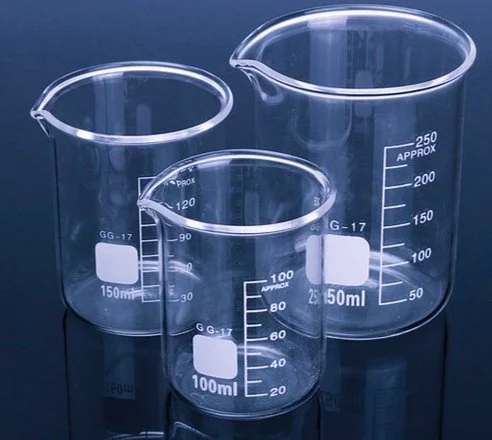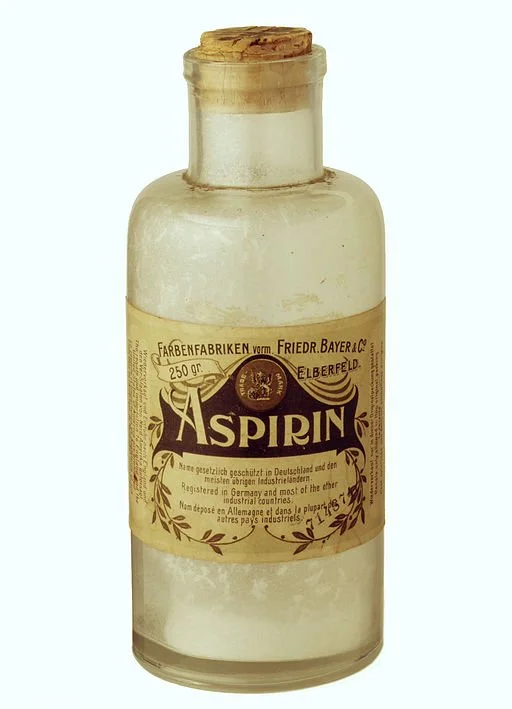https://commons.wikimedia.org/wiki/File:Portrait_of_a_Woman_MET_147860.jpg, Peter Edward Stroehling, CC0, via Wikimedia Commons
Deborah Tosline wrote and published “Skin Remodeling DIY: An Introduction to the Underground World of Do-It-Yourself Skincare” in 2015. Her approach to skin care is based on a scientific background, love of research and over 30 years of DIY skincare experience.
I am a huge fan of scrubbing, buffing, loosening and removing surficial skin cells to expose the fresh bright skin beneath. It’s vital to consistently remove old, dry, dead skin to maintain optimum skin health and promote new skin cell production. Why? Skin is our largest organ; it performs many functions to protect and keep us comfortable. Healthy skin is beautiful.
There are two methods of skin exfoliation:
Chemical – this method uses a variety of mild to strong acid solutions that dissolve the bonds between dead skin cells for easy removal to reveal new skin.
Physical (aka Mechanical) – this method uses abrasive ingredients and tools including sugar, oatmeal, brushes, sponges, dermaplaning, and microdermabrasion to loosen, abrade and remove dead skin cells.
This article focuses on chemical exfoliation. There are a variety of chemical exfoliants available to accommodate a variety of skin types. They may be used at low concentrations to resurface the skin in a slow and gentle way or at higher concentrations (using knowledge and care) for aggressive skin resurfacing.
https://commons.wikimedia.org/wiki/File:Glassware-_Beaker.jpg, Rohit Kumar Sengupta, CC BY-SA 4.0 <https://creativecommons.org/licenses/by-sa/4.0>, via Wikimedia Commons
Types of chemical exfoliants include:
Tricholoacetic Acid (TCA) – is one of the stronger acid peels. Research has shown that TCA is a "gold standard" among chemical peels. It may be used on all skin colors and types however, darker skin types must pre-treat with a melasma inhibiting product like a niacinamide serum for two to six weeks before treatment to prevent hyperpigmentation. TCA may be used at low concentrations for superficial treatments and at higher concentrations for a moderate medium depth peel. A TCA application may be combined with application of other acids including Jessner’s for a more aggressive peel. TCA is recommended to treat acne, skin tone and texture, hyperpigmentation, superficial melasma, fine lines and scars.
Jessner’s Peel – is a strong medium strength peel that consists of equal parts salicylic and lactic acids and resorcinol. Resorcinol is derived from phenol and has a 150-year history of use. The synergistic effect of these ingredients helps to deep clean pores and results in a strong peel, a desirable effect in advanced skin care. A medium depth peel is beneficial when managing cystic and heavy acne. Again, darker skin must pre-treat with a melasma inhibiting product like a niacinamide serum for two to six weeks before treatment to prevent hyperpigmentation. A Jessner’s peel requires 3 to 4 days of downtime during recovery. It is recommended for aggressive acne, clogged skin with open and closed acne, cystic acne, whiteheads, blackheads, body acne and scars.
Alpha Hydroxy Acid and Beta Hydroxy Acid
Alpha Hydroxy Acid (AHA) and Beta Hydroxy Acid (BHA) are popular types of chemical peels. The main difference between AHA’s and BHA’s is their solubility in water and oil. AHA’s can only be dissolved in water and are “water-soluble”. BHA’s may be dissolved in oil and are “lipid-soluble”. Lipid-soluble solutions like BHA can penetrate the oily sebum of a skin pore to exfoliate dead skin cells. BHA’s are typically used on oily skin and AHA’s are typically used on sun-damaged skin that is not prone to acne.
AHAs consist of natural acids that are strong enough to loosen surficial skin cells. AHA’s remove dead skin, stimulate collagen production, hydrate, brighten, smooth and promote an even skin tone.
https://commons.wikimedia.org/wiki/File:Ethylene_glycol_toxication.png ZhenC, CC BY-SA 4.0 <https://creativecommons.org/licenses/by-sa/4.0>, via Wikimedia Commons
Types of AHA’s
Glycolic acid – is derived from sugar cane. It is considered to be one of the best AHAs and is one of the most popular. Glycolic acid provides a light to superficial peel depending on the concentration used. It has a small molecular size that allows it to easily penetrate the epidermis. Glycolic acid treatments remove dead skin cells, moisturize, reduce fine lines, unclog pores, control acne and blackheads, smooth skin, stimulate natural collagen production, even skin tone, reduce hyperpigmentation and reduce the effects of sun-damage.
Lactic acid –is derived from sour milk when lactose is converted into lactic acid by bacteria. It is a mild peel that is gentle for sensitive skin. Lactic acid is a natural humectant. Humectants attract moisture from the environment and bind it in the skin giving it a plump appearance, however in a dry environment a humectant may pull moisture from the skin. Lactic acid may cause a light peel. It will gently refresh the skin, reduce the appearance of fine lines and hyperpigmentation, moisturize, stimulate collagen production, encourage cell turnover and smooth skin texture.
Citric acid – is derived from citrus fruits and berries. It has a large molecular structure making it harder for the skin to absorb and results in a mild peel that is good for sensitive skin. Citric acid provides antioxidant properties, promotes cell turnover, unclogs pores, evens tone, improves texture, brightens and minimizes pores, treats sun damage and moisturizes.
Malic acid - is derived from apples. It consists of larger molecules, this reduces skin penetration making it a mild peel that is good for sensitive skin. Malic acid is used to exfoliate, unclog pores, promote cell turnover, brighten, tone and strengthen the skin. It reduces hyperpigmentation and helps treat acne.
Mandelic acid – is derived from bitter almonds. It has a large molecular structure, takes longer to penetrate the skin and is less irritating. It has antimicrobial and antibacterial properties making it an effective acne/cystic acne treatment. Mandelic acid is used to reduce oil production, exfoliate, moisturize, reduce fine lines, unclog pores, control acne and blackheads, smooth skin, stimulate natural collagen production, even skin tone, reduce hyperpigmentation, reduce the effects of sun-damage and is suitable for those with Rosacea.
https://commons.wikimedia.org/wiki/File:Aspirin-Fl%C3%A4schchen.jpg Bayer AG, CC BY-SA 3.0 <https://creativecommons.org/licenses/by-sa/3.0>, via Wikimedia Commons
BHA’s
BHA’s are comprised of natural ingredients and are soothing and anti-inflammatory. There are numerous types of BHA’s, however salicylic acid is the most popular form.
Salicylic acid is derived from willow bark, contains salicin and is related to aspirin. Avoid using salicylic acid if you are allergic to aspirin. It is oil soluble and effective at managing oily skin. Salicylic acid treatments exfoliate, reduce hyperpigmentation, deep clean pores, treat acne, loosen blackheads and can smooth skin.
https://commons.wikimedia.org/wiki/File:Road_Block_Driving_Safety.jpg, Atlantic Training http://www.atlantictraining.com on the same page that uses this image., CC BY-SA 3.0 <https://creativecommons.org/licenses/by-sa/3.0>, via Wikimedia Commons
Precautions when using chemical peels
Sun Sensitivity - AHA and BHA use causes skin sun sensitivity to increase up to 50%. While use of AHA’s and BHA’s may reverse existing sun damage their use may cause hyperpigmentation if sun protection is used post AHA and BHA treatments. Use a good sunblock daily.
Skin Irritation - AHA and BHA treatments may result in skin irritation including redness, burning, itching, pain, and possibly scarring.
Hyperpigmentation - for those who are prone to hyperpigmentation, prior to a strong acid peel it’s important to treat the skin with a product that suppresses melanocytes like a niacinamide serum. Melanocytes are located deep in the epidermis and can rise to the surface to cause hyperpigmentation. Niacinimide suppresses melanocytes and helps prevent hyperpigmentation. Research shows that when niacinamide is used daily for more than 4 weeks it can significantly decrease hyperpigmentation.
https://commons.wikimedia.org/wiki/File:Sunflowers_helianthus_annuus.jpg Bruce Fritz, U.S. Department of Agriculture, Public domain, via Wikimedia Commons
Take Away
Chemical exfoliation cleans and smooths skin and provides multiple benefits. It speeds up cell turnover, promotes hydration, and unclogs pores. In addition to the many benefits listed in this article, chemical exfoliation promotes absorption of skin care products, stimulates lymphatic drainage to remove metabolic waste and reduce puffiness, and increases circulation bringing oxygen and nutrients in the skin.
If you need more information about DIY skin care, go to the library, search the Internet, read my past Blog articles, or it would be an honor to me if you purchase my book. Thank you!
Take good care of yourselves!
XO Deborah
This article is intended to be used as general information only and is in no way intended to replace medical advice, be used as a medical treatment program, diagnosis, or cure of any disease or medical condition. There are no warranties, expressed or implied, regarding the effectiveness of the practices described in this article. Products or substances discussed herein are for educational purposes only and are not intended as recommendations of the author.





